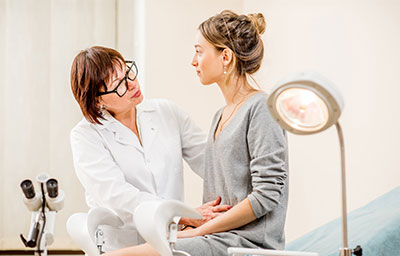Urogynecology
Urogynecology
A urogynecologist is a gynecologist or urologist with advanced training, education, and certification in the evaluation and treatment of women with urinary symptoms (including involuntary leakage, frequent urination, and bladder pain), bowel symptoms (including involuntary leakage and constipation), and pelvic relaxation defects (loss of support of the pelvic organs such as the bladder, uterus, and rectum). The formal name for our specialty is Female Pelvic Medicine & Reconstructive Surgery.
Urogynecologist treats problems with leakage (urinary incontinence), pelvic prolapse, cystocele, rectocele, and overactive bladder. Urinary incontinence is a problem more common in women and vaginal childbirth is just one of the risk factors associated with it. Others include genetic predisposition, diuretic medication, chronic constipation, smoking, and obesity. Overactive bladders often mean experiencing leakage as well as frequent urges to urinate. Reasons are most commonly neurological, inflammations and in some cases – unknown.
Pelvic floor conditions as previously described are the main focus of urogynecology, and incontinence is just one manifestation. Others, more sever forms, include pelvic organ prolapse. Risk factors are the same as with urinary incontinence, with emphasis on obesity which dramatically increases the chances of pelvic prolapse
In case you experience any of the following symptoms:
- Sense of heaviness, aching or fullness in the vagina
- Leaking pee when coughing, laughing or spasming stomach muscles during exercise
- Sudden and urgent need to pee, frequently
- Repetitive infections of the urinary tract
- Hard time emptying the bladder
- A bulge or visible protrusions on the vagina
The majority of these problems tend to develop over time and are not congenital. Having a strong relationship of trust with your doctor and urogynecologist is vital. Trustful and meaningful sharing of all problems that you may have will lead to understanding and adequate healing.
These are useful links to describe common urogynecologic conditions and treatments.
Patient Feedback
Jennifer B.
What a amazing staff. Everyone was so kind and genuinely cared about me. I did not feel like just another patient at all. Absolutely love everyone who helped me feel comfortable when we all know who’s comfortable at the doctors office. Wish we had more amazing doctors like Dr. St. Louis and her amazing nurse. You guys are amazing 💜
Donna P.
Dr Sarah St Louis listens very carefully and accesses your concerns with care. She has a great bedside manner and talks to you with respect and concern walking you through the treatment. I had been to two other doctors prior and only had temporary relief. Dr St Louis diagnosed me on the first visit, ordered some additional testing to confirm her diagnosis and within a couple of weeks I was feeling better. Her staff is wonderful and caring also. 5 stars for them all!
Karen M.
My experience at my first appointment with Dr St Louis was excellent. Marlie, Carol and Dr St Louis were very friendly and helpful, making sure I was comfortable as a new patient. Dr St Louis was very knowledgeable and explained things in a straightforward, easy to understand manner. She addressed all my issues and was extremely easy to talk to. Five stars!!



